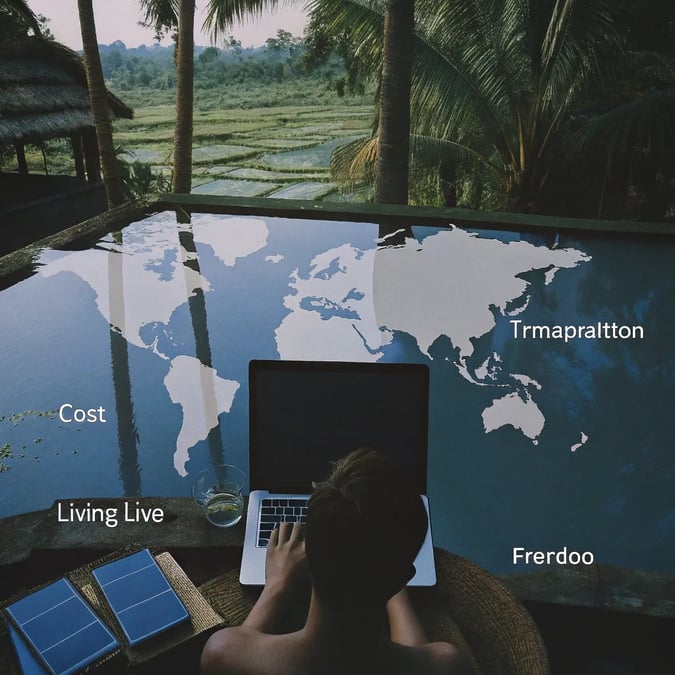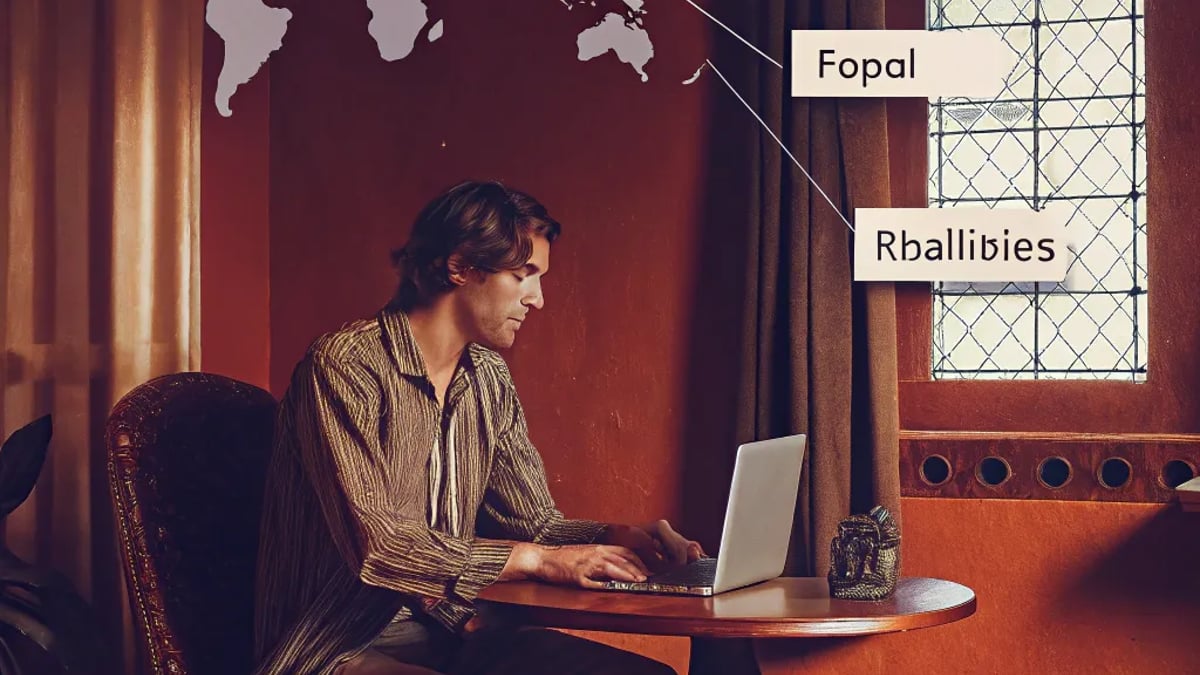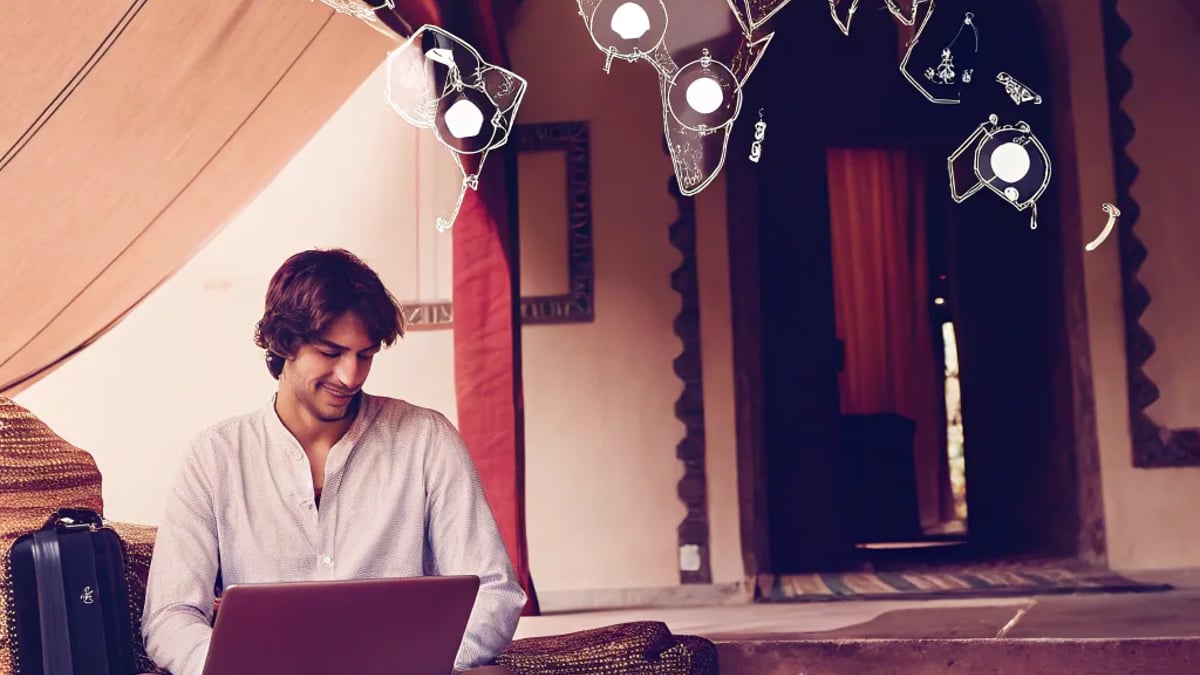
The allure of working poolside in Bali or from a café in Lisbon has turned the digital nomad lifestyle from a fringe concept into a mainstream aspiration. But behind those Instagram-perfect shots lies a crucial reality: managing your money effectively is what keeps the nomadic dream alive. As someone who's navigated the financial ups and downs of location independence, I've learned that budgeting abroad requires both creativity and discipline.
Understanding the Digital Nomad Financial Landscape
The financial reality for digital nomads varies wildly depending on income sources, destinations, and personal habits. While some nomads earn six-figure salaries working remotely for tech companies, others cobble together freelance gigs or teach English online to fund their travels.
"The biggest misconception is that all digital nomads are wealthy," says Maria Fernandez, who's been working remotely across Southeast Asia for three years. "Many of us live on modest incomes but make it work through strategic choices about where and how we live."
Income Sources That Sustain Nomads

Digital nomads typically rely on one or more of these income streams:
- Remote employment with companies in their home countries
- Freelance work in writing, design, programming, or marketing
- Online teaching (particularly TEFL - Teaching English as a Foreign Language)
- Content creation through blogs, YouTube, or social media
- E-commerce or dropshipping businesses
- Consulting services offered virtually
According to a recent Reddit thread, many newcomers are surprised by the gap between the lifestyle portrayed on social media and the actual work required. One commenter noted, "Those Instagram influencers talking about 'passive income' are usually selling courses about how to make passive income. The reality is most of us work pretty normal jobs—just from different locations."
Leveraging Geographic Arbitrage
One of the most powerful tools in a digital nomad's financial arsenal is geographic arbitrage—earning in strong currencies while spending in weaker ones.
This approach can dramatically stretch your budget. For example, earning a modest income in US dollars can provide a comfortable lifestyle in countries like Thailand, Vietnam, or Colombia, where living costs are a fraction of those in North America or Western Europe.

When I visited Bogotá, Colombia last spring, I was shocked by how far my dollars went. A nice meal out cost about $8, and I rented a modern apartment in a great neighborhood for less than a third of what I'd pay back home.
Top Budget-Friendly Nomad Destinations
For those looking to maximize their financial runway, these destinations offer an attractive balance of affordability, infrastructure, and quality of life:
Southeast Asia:
- Chiang Mai, Thailand
- Bali, Indonesia (outside tourist hotspots)
- Ho Chi Minh City, Vietnam
Eastern Europe:
- Tbilisi, Georgia
- Budapest, Hungary
- Sofia, Bulgaria
Latin America:
- Medellín, Colombia
- Mexico City, Mexico
- Buenos Aires, Argentina (despite inflation, still affordable with USD)

Creating a Nomad-Specific Budget Framework
Traditional budgeting advice often falls short for those constantly on the move. Digital nomads need flexible systems that account for changing currencies, variable costs between destinations, and irregular income.
The 50-30-20 Nomad Adaptation
A modified version of the classic 50-30-20 budget works well for many nomads:
- 50% for essential nomad costs (accommodation, coworking spaces, transportation between locations, visas, travel insurance)
- 30% for daily living (food, local transportation, entertainment)
- 20% for savings and contingencies
This framework needs regular adjustment as you move between expensive and budget-friendly locations. Your accommodation percentage might drop to 30% in Bali but jump to 60% during a month in London.
Tracking Tools That Work Across Borders
Keeping tabs on spending across multiple currencies and payment methods presents unique challenges. Some effective solutions include:
- Expense tracking apps: Trabee Pocket and Trail Wallet are designed specifically for travelers dealing with multiple currencies
- Banking apps: Wise (formerly TransferWise) and Revolut offer multi-currency accounts with real-time conversion
- Spreadsheet templates: Some nomads prefer customized Google Sheets that can be accessed from anywhere
"I review my spending weekly rather than monthly," explains James Chen, a programmer who's been nomadic for four years. "When you're moving between countries with dramatically different costs, waiting a month to check your budget can lead to expensive surprises."
How Do I Handle Banking and Taxes as a Digital Nomad?
This question causes more headaches for nomads than almost any other financial issue. The answer depends largely on your citizenship, income sources, and travel patterns.
Most digital nomads maintain their primary banking relationships in their home countries while using specialized services for international transactions. Wise, Revolut, and Charles Schwab are popular for their minimal foreign transaction fees and favorable exchange rates.
For taxes, the situation gets complicated. US citizens, for example, must file taxes regardless of where they live, though the Foreign Earned Income Exclusion can shield up to about $120,000 of foreign-earned income from US taxes if certain requirements are met.
"Don't try to wing your tax situation," advises tax specialist Sarah Miller of Bright!Tax, which specializes in expat taxation. "The penalties for non-compliance can be severe, and proper planning can often reduce your tax burden legally."
Non-US citizens may become tax residents of countries where they spend significant time, potentially triggering tax obligations there. Some nomads use tax advisors to help navigate these complexities, while others choose home bases in tax-friendly jurisdictions.
Emergency Fund Strategies for Unpredictable Lifestyles
The nomadic lifestyle comes with unique risks—medical emergencies in foreign countries, sudden border closures (as many experienced during COVID-19), equipment theft, or unexpected income gaps.
Most financial experts recommend digital nomads maintain larger emergency funds than their stationary counterparts—ideally 6-12 months of expenses rather than the standard 3-6 months.
This fund should be easily accessible but not too easy to tap for non-emergencies. Many nomads keep their emergency savings in high-yield accounts in their home countries while maintaining smaller buffers in more accessible accounts.
Balancing Present Enjoyment with Future Security
Perhaps the trickiest aspect of nomad finances is striking the right balance between enjoying your global adventures now and securing your financial future.
"I've seen too many nomads focus exclusively on minimizing costs to extend their travels without thinking about retirement or building wealth," notes financial coach Elena Stavrakis. "The nomad lifestyle shouldn't mean sacrificing your financial future."
Some practical approaches include:
- Automating contributions to retirement accounts in your home country
- Investing a percentage of income regardless of where you are
- Building location-independent income streams that could eventually become passive
- Setting clear financial milestones alongside travel goals
Avoiding Common Financial Pitfalls
Many new nomads make predictable financial mistakes that can derail their adventures:
- Underestimating transition costs: The initial move to nomadic life often costs more than expected
- Ignoring insurance needs: Comprehensive travel insurance is essential, not optional
- Moving too frequently: Constant movement dramatically increases expenses
- Maintaining too many fixed costs back home: Storage units, unused apartments, and car payments can drain resources
- Succumbing to "nomad inflation": Living like you're on vacation rather than creating sustainable habits
The TEFL (Teaching English as a Foreign Language) community offers valuable insights here. According to the International TEFL Academy, successful nomadic teachers typically establish "slow travel" patterns, staying in locations for months rather than weeks to deepen their experience while reducing costs.
Building Community Without Breaking the Bank
Connection is essential for wellbeing, but constant socializing in nomad hotspots can destroy your budget. Finding the right balance requires creativity.
"When I first started out, I was spending a fortune on coworking spaces and nomad events," recalls digital marketer Sophia Williams. "Now I alternate between paid community spaces and free options like libraries or cafe work sessions with friends. My social life is richer and my bank account is healthier."
The Expat Slow Travel Nomad Network and similar communities provide platforms for nomads to connect, share resources, and even find housing together—often leading to both cost savings and meaningful relationships.
The digital nomad lifestyle offers extraordinary freedom and opportunity, but sustaining it requires thoughtful financial management. By leveraging geographic advantages, creating flexible systems, and balancing present enjoyment with future security, you can build a nomadic life that's both enriching and sustainable. The key is remembering that behind every perfect Instagram shot of a laptop on the beach lies a carefully constructed financial foundation.
Tags

About Maya Caldwell the Author
Maya Caldwell is a seasoned digital nomad with over a decade of experience navigating the global work-from-anywhere lifestyle. She specializes in crafting innovative travel strategies that maximize productivity and adventure for remote workers.
Recommended Articles
Retirement Planning Essentials Every American Should Know
Learn essential retirement planning tips for a secure financial future, including types of plans and savings strategies every American should know.
Medicare Drug List Updates for 2026 Are Out
Discover the key Medicare drug coverage updates for 2026, including cost caps and price negotiation programs for better healthcare options.
Which iPhone Color Fits Your Style Best
In 2025, Apple tantalizes with its latest iPhone colors, each more chic and expressive than the last—think deep Titanium Blue, vibrant Product RED, and sophisticated Desert Sand. Whether your style leans toward muted sophistication, bold statements, or earthy tones, this guide reveals how your iPhone hue can harmonize with your wardrobe and lifestyle, elevating your personal tech as both a tool and statement piece. Dive in to discover which shade will perfectly reflect your personality and make you eager to flaunt your device.
Why More Adults Are Switching to Safety Footwear
In recent years, safety footwear has transcended its construction site origins, becoming a fashionable and practical choice for adults across various demographics seeking both comfort and protection in their daily wardrobes. With sleek designs, versatile features like non-slip soles and breathable materials, and a growing awareness of foot health, these modern safety shoes are not only reducing fall risks but also proving that style and functionality can go hand in hand. Discover how these shoes are revolutionizing everyday fashion and why more people are making the switch.
See the New iPhone Colors Everyone’s Talking About
Unveiling the dazzling iPhone 2025 color lineup, Apple has stunned audiences with striking hues like deep emerald, Alpine Blue, and Desert Titanium, making waves among tech enthusiasts and setting a new benchmark for smartphone aesthetics. Discover how these colors not only enhance the iPhone's premium feel but also influence its resale value, offering a fresh perspective on choosing the perfect shade for your next device.




